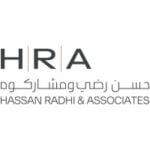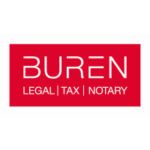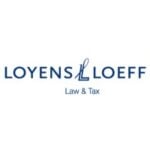-
What are the most common types of corporate business entity and what are the main structural differences between them?
The most commonly used corporate business entity in Singapore is a company limited by shares incorporated under the Singapore Companies Act (CA). Such a company may be a private company, which has a maximum 50-shareholder limit (excluding employees) and restrictions on share transfers, or a public company. Companies seeking to list on the Singapore Exchange (SGX) would be public companies. A company must have at least one shareholder and one director, and must always have at least one director who is ordinarily resident in Singapore. There is no statutory maximum number of directors, but limits can be stipulated in the company’s constitution (Constitution). Subject to the Constitution, a company generally has full capacity to carry on or undertake any business or activity, do any act or enter into any transaction, and full rights, powers and privileges for such purposes. Companies can also be limited by guarantee, but such companies are generally used for not-for-profit purposes. Other business forms in Singapore include Limited Liability Partnerships (LLP), Limited Partnerships (LP) and Variable Capital Companies (VCC).
An LLP is a body corporate and has a legal personality separate from its partners and perpetual succession. It can sue and be sued and hold property in its own name. A partner of an LLP can be held personally liable for claims from losses resulting from his own wrongful act or omission, but will not be held personally liable for such wrongful acts or omissions of other partners or for business debts incurred by the LLP. LLPs are commonly used for small businesses or professional organisations such as accounting or legal firms. In contrast, an LP is not a separate legal entity from its partners. An LP cannot sue, or be sued, or own property in its own name. It is a partnership consisting of a minimum of two partners, comprising at least one general partner and one limited partner. The general partner is liable for all debts and obligations of the LP. Both LLPs and LPs are not liable to tax at the entity level. Each partner is taxed on its share of income from the LLP or LP.
The VCC is a corporate structure for investment funds that was introduced in 2020. A VCC has a variable capital structure that provides flexibility in the issuance and redemption of its shares. It can also pay dividends out of capital, which gives fund managers flexibility to meet dividend payment obligations.
-
What are the current key topical legal issues, developments, trends and challenges in corporate governance in this jurisdiction?
The first key focus for corporate governance in Singapore is sustainability and in particular, mandatory climate reporting to help companies ride the green transition in line with Singapore’s national agenda on sustainable development. The Singapore government has increasingly focused on sustainability, taking concrete steps to support and accelerate a green transition in Singapore. The Singapore Green Plan 2030 was introduced in February 2021 and is intended, among others, to strengthen Singapore’s economic, climate, and resource resilience, and bring new business and job opportunities. Corporate leaders are increasingly expected to give due consideration to sustainability when charting corporate growth. The Accounting and Corporate Regulatory Authority (ACRA), the regulator of companies in Singapore, and the Singapore Exchange Regulation (SGX Regco), the frontline regulator of companies listed on the SGX, have set up an industry-led committee, the Sustainability Reporting Advisory Committee (SRAC) to advise on a sustainability reporting roadmap for Singapore-incorporated companies and to provide inputs on the suitability of international sustainability reporting standards for implementation in Singapore. In November 2023, ACRA issued a Financial Reporting Practice Guidance to guide directors (in particular, audit committees) in assessing the accounting implications of climate risks. Sustainability reporting for SGX-listed companies has been implemented for over a decade. Starting from the financial years commencing on or after 1 January 2025, the SGX Regco has also required all SGX-listed companies to start reporting climate-related disclosures (CRDs) incorporating climate-related requirements in the IFRS Sustainability Disclosure Standards issued by the International Sustainability Standards Board (ISSB) excluding the requirement on Scope 3 greenhouse gas (GHG) emissions, with full alignment with the IFRS Sustainability Disclosure Standards expected by the following financial year. The SRAC has also proposed to mandate CRDs on non-listed companies with annual revenue of at least S$1 billion from the financial year 2027 and non-listed companies with annual revenue of at least S$100 million to less than S$1 billion revenue by around financial year 2030. These amendments aim to uphold Singapore’s attractiveness as a global business hub while contributing to sustainable development. A dedicated working group under the Green Skills Committee, led by ACRA and Enterprise Singapore, was also set up to develop a capacity building and skills plan for sustainability reporting and assurance. In acknowledging the challenges that companies may face in navigating the new reporting requirements, various initiatives have been launched to support companies such as the launch of the Sustainability Reporting Grant to offer financial support to companies to produce their first ISSB-aligned sustainability report, the development by the Infocomm Media Development Authority of digital sustainability solutions under the Advanced Digital Solutions Scheme to help eligible enterprises measure, monitor and manage their GHG emissions. Directors of SGX-listed companies are also required to undergo mandatory sustainability training. The Code of Corporate Governance 2018 (CG Code) refers to sustainability as one of the tenets of good governance. With the increased focus on sustainability disclosures, board of directors (Board) should also be cognisant of the risk of greenwashing.
Another key focus is diversity in the boardroom. This goes beyond gender diversity which continues to remain the most oft-discussed diversity metric. The CG Code states that the Board should have diversity of thought and background in its composition to enable it to make decisions in the best interests of the company, and that having an appropriate balance and mix of skills, knowledge, experience, and other aspects of diversity such as gender and age will help avoid groupthink and foster constructive debate. To this end, SGX-listed companies are required to maintain a board diversity policy addressing relevant aspects of diversity and to disclose in their annual reports objectives and progress made towards implementing the policy and achieving diversity. The 2025 Singapore Board Diversity Index, which is developed by the Singapore Institute of Directors, WTW and James Cook University (Singapore Campus), to chart the progress of around 600 SGX-listed entities across eight dimensions of board diversity as of 30 September 2024, have reflected improvements in key areas such as gender, board independence, and industry and domain expertise. In relation to gender diversity, Singapore does not impose a mandatory gender ratio for Boards. According to the Council of Board Diversity (CBD), as at 31 December 2024, the CBD’s interim target of 25% of the Boards for the 100 largest primary-listed companies on the SGX being women by end-2025 has been met a year ahead of schedule. The CBD’s next target is the achievement of 30% women board representation by 2030. Directors should also note that Singapore has in 2025 passed a new Workplace Fairness Bill which prohibits discrimination by employers based on certain protected characteristics, which include gender, age, race and nationality, amongst others. It is hoped that as diversity in the workforce improves, this will help to provide a ready pipeline of candidates with diverse attributes for the future boardroom as well.
-
Who are the key persons involved in the management of each type of entity?
The CA provides that the business of a company is to be managed by, or under the direction or supervision of, the directors, and that the directors may exercise all the powers of a company (except any power that the CA or the Constitution requires the shareholders to exercise in general meeting). Typically, the Constitution confers on the Board wide powers over the management and affairs of the company.
-
How are responsibility and management power divided between the entity’s management and its economic owners? How are decisions or approvals of the owners made or given (e.g. at a meeting or in writing)?
Please see response to 3. above. Shareholders’ decisions are generally taken by a vote on resolutions tabled at general meetings. Subject to certain prescribed conditions, the CA also permits companies (other than listed public companies) to seek shareholders’ approval by obtaining their signatures to resolutions in writing, which are circulated to all shareholders who are entitled to vote on that resolution at a general meeting. The CA also provides companies the option to conduct general meetings in a fully virtual or hybrid (i.e. both physical and virtual) manner. SGX-listed companies however, are only permitted under the SGX listing rules (SGX-LR) to hold either physical or hybrid general meetings.
-
What are the principal sources of corporate governance requirements and practices? Are entities required to comply with a specific code of corporate governance?
The CA and its subsidiary legislation form the principal source of Singapore law stipulating how companies are to be governed. The Securities and Futures Act and its subsidiary legislation regulate, among others, activities in the securities industry such as market conduct and insider trading. As a common law jurisdiction, although the Singapore courts do not make law at their own discretion, they are able to interpret legislation for the purposes of deciding cases brought before them. Judge-made law cannot conflict with either the Constitution of Singapore or laws passed by the Singapore Parliament. SGX-listed companies also have to abide by the SGX-LR. The CG Code (and accompanying Practice Guidance) sets out corporate governance best practices for SGX-listed companies. Compliance with the Principles of the CG Code is mandatory, while its Provisions apply on a ‘comply or explain’ basis.
-
How is the board or other governing body constituted? Does the entity have more than one? How is responsibility for day-to-day management or oversight allocated?
Singapore companies have a single-tier Board. The Board may be empowered by the Constitution to constitute sub-committees to oversee specific delegated responsibilities. The Board may by resolution authorise or appoint specific officers to undertake certain actions for and on behalf of the Board and the company, or appoint a person to act as the company’s attorney. The Board has the power to delegate authority for day-to-day management to one or more individuals (e.g. the chief executive officer (CEO)), but retains a non-delegable duty of supervision and oversight over persons to whom it has delegated responsibilities and actions.
-
How are the members of the board appointed and removed? What influence do the entity’s owners have over this?
Directors may generally be appointed or removed by shareholders in general meeting. The Constitution will usually prescribe the procedure for director appointments and may provide that the Board has power to appoint additional directors, or to appoint a director to fill a casual vacancy (but typically will also state that any director so appointed is subject to retirement and re-election at the next annual general meeting (AGM)).
-
Who typically serves on the board? Are there requirements that govern board composition or impose qualifications for board members regarding independence, diversity, tenure or succession?
Subject to meeting certain qualifications e.g. a director must be at least 18 years old and not an undischarged bankrupt, private companies are generally left to regulate their own Boards and determine their own directors. SGX-listed companies’ Boards must have at least two non-executive directors (NEDs) who are independent and free of any material business or financial connection with the company, and independent directors (ID) must comprise at least one-third of the Board. Foreign-incorporated SGX-listed companies must have at least two Singapore-resident IDs. The criteria for when a director of an SGX-listed company may be considered ‘independent’ is generally found in the CG Code as well as the SGX-LR. In particular, the SGX-LR prescribes when a director is deemed non-independent e.g. if he is or has in any of the past three financial years been an employee of the listed company or its related corporation, or if he has served for an aggregate of more than nine years on the Board. SGX-listed companies are required to subject every director to re-nomination (and re-appointment, if applicable) every three years. Certain industry-specific regulations or licensing regimes also prescribe additional requirements or restrictions regarding director qualifications. Other than as described, there are no limits on director tenures, or maximum age limits. Principle 4 of the CG Code requires the Board to have a formal and transparent process for appointment and re-appointment of directors, taking into account the need for progressive board renewal. Board refreshment and succession are generally considered part of the Board’s responsibilities. SGX-listed companies must maintain a board diversity policy and disclose their targets and progress towards achieving diversity on the Board. Please see response to 2. above regarding diversity.
-
What is the role of the board with respect to setting and changing strategy?
The CG Code recognises that the Board has the role of setting strategic direction. The execution of strategy is typically delegated to the CEO and management under the Board’s direction. The CA does not dictate how companies and Boards are to set and change corporate strategy.
-
How are members of the board compensated? Is their remuneration regulated in any way?
The CA provides that a company must not provide or improve emoluments for directors in respect of such office, unless this is approved by separate shareholders’ resolution (generally tabled at AGMs). This applies to directors’ fees, expenses allowance insofar as this is charged to income tax in Singapore, contributions paid under pension schemes, and non-cash benefits received (for example, a company car or parking privileges). It is also generally unlawful for a company to make payments to directors by way of either compensation for loss of office as an officer of the company or of its subsidiary or as consideration for or in connection with retirement from such office, or in connection with the transfer of whole or part of the undertaking or property of the company, subject to certain limited exceptions. Save for the foregoing, companies are otherwise generally free to set the level or mode of directors’ compensation. SGX-listed companies’ Constitutions are required to provide that fees payable to NEDs shall be by a fixed sum and not a commission on or a percentage of profits or turnover, and salaries payable to executive directors may not include a commission on or a percentage of turnover. It is quite customary for SGX-listed company directors’ remuneration to include a non-cash component, e.g. share-based incentives (which for executive directors customarily carry performance conditions). With effect from the financial years ending on or after 31 December 2024, SGX-listed companies will have to disclose the exact amount and breakdown of the remuneration paid to their CEO and directors in their annual reports. Such breakdown must include (in percentage terms) base or fixed salary, variable or performance-related income or bonuses, benefits in kind, stock options granted, share-based incentives and awards, and other long-term incentives. The Corporate Governance Advisory Committee also issued a Statement on Remuneration Disclosure in December 2023, recommending that companies provide qualitative disclosures (e.g. explain the remuneration framework and disclose objectives and key performance metrics used to determined the year’s variable or performance-related remuneration) alongside the mandatory quantitative disclosures to address concerns of misleading comparisons across issuers of different industries and sizes and potential poaching of personnel as a result of the mandatory disclosures. In addition, the SGX-LR provides that ‘golden handshake’ or retirement pay-outs to directors of SGX-listed companies are additionally subject to separate requirements under the ‘interested person transactions’ rules under the SGX-LR.
-
Do members of the board owe any fiduciary or special duties and, if so, to whom? What are the potential consequences of breaching any such duties?
A director owes fiduciary duties to the company. He must act in the best interests of the company, and cannot put himself in a position of a conflict of interests. Any such conflict must be declared to the Board. The CA further provides that a director must at all times act honestly and use reasonable diligence in the discharge of his duties, and must not make improper use of his position, or any information acquired by virtue of his position, to gain an advantage for himself or any person, or to cause detriment to the company. A breach of these provisions could render the director liable to the company for any profit made by him or for damage suffered by the company as a result, and also guilty of an offence which could carry a fine and/or imprisonment term. A director could also be sued by the company for breach of fiduciary duties under common law and liable to compensate the company.
-
Are indemnities and/or insurance permitted to cover board members’ potential personal liability? If permitted, are such protections typical or rare?
Under the CA, any provision that purports to exempt a director from any liability that would otherwise attach to him in connection with any negligence, default, breach of duty or breach of trust in relation to the company is void. A company also cannot directly or indirectly provide an indemnity in favour of a director against any liability attaching to him in connection with any negligence, default, breach of duty or breach of trust in relation to the company, subject to certain exceptions, among which is that the company is not prevented from purchasing and maintaining directors’ and officers’ liability insurance. It is quite customary for SGX-listed companies to purchase such insurance for directors.
-
How (and by whom) are board members typically overseen and evaluated?
SGX-listed companies are required to establish a nominating committee which is responsible for making recommendations to the Board on, among others, the process and criteria for evaluation of the performance of the Board, its board committees and directors. Boards may also enlist the help of an external evaluator to facilitate the Board and director evaluation process, and this is perceived as providing an additional element of independence and encouraging candour. ACRA has wide disciplinary and enforcement powers. Other than prosecuting errant directors in court, ACRA’s various other regulatory tools include seeking court orders to disqualify directors, issuing debarment orders to prevent directors from assuming further directorships, requiring directors to attend mandatory outreach training sessions, issuing private warnings, etc. ACRA works with and refers breaches to other appropriate law enforcement agencies. The SGX Regco also has wide-ranging regulatory tools under the SGX-LR, and also refers serious matters to regulatory authorities e.g. ACRA or the Monetary Authority of Singapore (MAS).
-
Is the board required to engage actively with the entity’s economic owners? If so, how does it do this and report on its actions?
Under the CA, a company must hold an AGM after the end of each financial year. For private companies, this can be waived by shareholders. SGX-listed companies with a primary listing on the SGX must hold their AGM at a physical venue in Singapore unless a waiver has been granted by the SGX Regco on the basis that this contravenes the corporation’s law of incorporation or regulations thereunder. In 2024, SGX Regco, together with the Securities Investors Association (Singapore) (SIAS) and Singapore Institute of Directors, released the Guide on Best Practices for Shareholder Meetings of Listed Companies (Second Edition), to encourage a positive climate for robust and open discussions between the Board and shareholders at general meetings. The Guide addresses, among other things, issues of how participants should maintain themselves and ask questions and issues that the Board, particularly, the Chairman, should be aware of, with the aim of ensuring a more conducive meeting where divergent interests of various stakeholders can be addressed. The Guide states that Board and management should be present and interact with shareholders before and after the meeting. For companies with large shareholder base or a significant number of shareholders outside Singapore or where resolutions relate to non-routine matters, it may be appropriate for a hybrid meeting to be organised with shareholders being allowed to ask questions “live” where a hybrid meeting is conducted.
All shareholders are entitled to attend and to vote at the AGM (though for SGX-listed companies, certain shareholders may be required to abstain from voting if they are interested in a particular resolution). The voting results of every general meeting must be promptly announced via the SGX website. Please also see response to 20. below. The CG Code provides that companies should publish minutes of general meetings on their corporate websites, which should record substantial and relevant shareholders’ comments or queries relating to the agenda and responses from the Board and management. It also provides that companies should have in place an investor relations policy to actively engage and promote regular, effective and fair communication with shareholders. Companies should provide shareholders with the opportunity to communicate their views on matters affecting the company, and to participate effectively in and vote at general meetings. All directors should attend general meetings. The SGX-LR requires SGX-listed companies to prepare an annual report to its shareholders containing enough information for a proper understanding of the performance and financial conditions of the company and its principal subsidiaries, and including certain prescribed information. They are also required to publish annual sustainability reports.
-
Are dual-class and multi-class capital structures permitted? If so, how common are they?
Companies have flexibility in how they wish to structure their own share capital, and under the CA, shares can carry different rights relating to voting, dividends, liquidation preference, etc., with such rights to be specified in the Constitution. Venture capital companies and startups are often structured with multi-class capital structures tailored to meet their commercial needs and those of their investors. For SGX-listed companies, the SGX-LR provides for dual-class capital structures which meet various requirements and safeguards for the protection of shareholders.
-
What financial and non-financial information must an entity disclose to the public? How does it do this?
Unless exempted, every company must file audited financial statements and lodge an annual return containing prescribed particulars (e.g. share capital details, and company officers’ particulars) with ACRA. This is generally accessible by the public for a prescribed fee. In addition, SGX-listed companies are required to post their annual report (containing audited financial statements and other prescribed or relevant information on its business, operations, corporate governance, etc. – please see response to 14. above) and annual sustainability report on the SGX website, which is publicly accessible. Under the SGX-LR, SGX-listed companies are also required to make immediate announcements via the SGX website of a range of matters, such as trade-sensitive or materially price-sensitive information, half-yearly financial statements, significant transactions, appointment or cessation of directors or other key persons, etc.
-
Can an entity’s economic owners propose matters for a vote or call a special meeting? If so, what is the procedure?
Under the CA, shareholders who meet the requisite minimum shareholding requirements may requisition for an extraordinary general meeting (EGM) to be convened by the Board, or may call an EGM. Shareholders who meet the requisite minimum shareholding requirements may also requisition for a resolution to be proposed at the next AGM.
In the case of SGX-listed issuers, SGX Regco has observed that requisitionists may be constrained in their ability to satisfy the procedural requirements necessary to convene and conduct a shareholder-requisitioned meeting or when the Board does not cooperate in convening a general meeting upon a shareholders’ requisition. In light of this, SGX Regco published a consultation paper in 2024 on facilitating shareholder-requisitioned meetings, proposing to amend the SGX-LR to require issuers to provide assistance reasonably necessary to shareholders to facilitate the convening of a general meeting where procedural thresholds in the relevant laws and regulations governing the issuer in its place of constitution and its constitution have been met or to apply to court for a ruling where it disputes the validity of the requisition notice, in each case as soon as practicable within 21 days upon deposit of the requisition notice. Areas in which SGX Regco envisages that issuers can provide assistance to requisitionists include releasing announcements and documents (such as notices, circulars and proxy forms) on SGXNet, sending the relevant documents to shareholders and instructing its agents, including its share registrar and company secretary, to provide any necessary assistance such as preparing the mailing labels for the purposes of sending documents to shareholders and attending the shareholder-requisitioned meeting.
-
What rights do investors have to take enforcement action against an entity and/or the members of its board?
Shareholders may commence legal action in the name of the company in a derivative action against a director, subject to the relevant requirements. Remedies are also available for minority shareholders to bring an action on the grounds of minority oppression. In general, shareholders do not have direct recourse against the directors of the company.
-
Is shareholder activism common? If so, what are the recent trends? How can shareholders exert influence on a corporate entity’s management?
Shareholder activism, while uncommon in the past has become increasingly prevalent. Recent examples include shareholders requisitioning for replacement of incumbent directors due to dissatisfaction with corporate performance, or shareholders rallying other shareholders through channels such as social media to vote down corporate proposals or takeover offers which they perceive to be disadvantageous. In 2023, the SGX Regco issued a regulator’s column making clear its expectations of Boards of SGX-listed corporations in relation to shareholder requisitions for meetings, so as to ensure that the interests of shareholders as a whole are protected. The SGX Regco’s view is that parties involved should aim to work together as a public dispute would not serve the interests of the listed corporation or its shareholders as a whole, and exhorts Boards to seek to find common ground with the requisitionists. The SGX Regco’s consultation paper in 2024 on facilitating shareholder-requisitioned meetings (please see response to 17. above) acknowledged the increasing level of shareholder activist campaigns and looked to address the procedural constraints faced by shareholders in requisitioning meetings to directly engage with the Board. Other ways in which shareholders exert influence include amassing higher ownership stakes in companies, engaging in private dialogue with the Board, reaching out to investor lobby groups like the SIAS for assistance, posing questions to the Board and management at general meetings, and writing letters of complaint to the regulators.
-
Are shareholder meetings required to be held annually, or at any other specified time? What information needs to be presented at a shareholder meeting?
Please see response to 14. and 17. above. All shareholder meetings of a company other than the AGM are referred to as EGMs.
As for the timing of the AGM, SGX Regco encourages SGX-listed issuers to avoid scheduling their AGMs around busy periods, which are typically the two weeks immediately preceding the deadline for holding of AGMs. To reduce clustering of AGMs by large issuers that are constituents in the Straits Times Index, the SGX Regco maintains a calendar of the AGMs of such issuers and will require the issuer to select another date or time period where a conflict arises.
Unless exempted, a company must lay before its shareholders at the AGM its audited financial statements, together with the independent auditors’ report and a prescribed directors’ statement thereon. Routinely tabled AGM resolutions include approval of directors’ fees and appointment or re-appointment of directors and auditors.
-
Are there any organisations that provide voting recommendations, or otherwise advise or influence investors on whether and how to vote (whether generally in the market or with respect to a particular entity)?
Various international proxy advisory firms provide such coverage.
-
What role do other stakeholders, including debt-holders, employees and other workers, suppliers, customers, regulators, the government and communities typically play in the corporate governance of a corporate entity?
While the Board is principally responsible for the corporate governance of the company, each set of stakeholders would play their part in holding the company and Board accountable, debt-holders by holding the company to its corporate governance obligations in their debt documentation, the government and regulators in setting best practice standards and imposing them on companies which they regulate, employees and other workers by putting into practice a corporate culture of good governance, and business partners and communities by setting expectations of good governance and holding the company accountable for its environmental, social and governance (ESG) commitments.
-
How are the interests of non-shareholder stakeholders factored into the decisions of the governing body of a corporate entity?
Principle 13 of the CG Code requires the Board to adopt an inclusive approach by considering and balancing the needs and interests of material stakeholders, as part of its overall responsibility to ensure that the company’s best interests are served. The company should have arrangements to identify and engage with its material stakeholder groups and to manage its relationships with them.
-
What consideration is typically given to ESG issues by corporate entities? What are the key legal obligations with respect to ESG matters?
Please see responses to 2. and 23. above.
-
What stewardship, disclosure and other responsibilities do investors have with regard to the corporate governance of an entity in which they are invested or their level of investment or interest in the entity?
Shareholders generally do not owe fiduciary or corporate governance obligations to the companies in which they invest. The Singapore Stewardship Principles (SSP) for Responsible Investors was developed with the support of the MAS and SGX, but does not carry force of law.
-
What are the current perspectives in this jurisdiction regarding short-term investment objectives in contrast with the promotion of sustainable longer-term value creation?
Following the financial crisis of 2008, the Code of Corporate Governance 2012 emphasised long-term success and sustainable shareholder value, and this has continued into the CG Code.
Singapore: Corporate Governance
This country-specific Q&A provides an overview of Corporate Governance laws and regulations applicable in Singapore.
-
What are the most common types of corporate business entity and what are the main structural differences between them?
-
What are the current key topical legal issues, developments, trends and challenges in corporate governance in this jurisdiction?
-
Who are the key persons involved in the management of each type of entity?
-
How are responsibility and management power divided between the entity’s management and its economic owners? How are decisions or approvals of the owners made or given (e.g. at a meeting or in writing)?
-
What are the principal sources of corporate governance requirements and practices? Are entities required to comply with a specific code of corporate governance?
-
How is the board or other governing body constituted? Does the entity have more than one? How is responsibility for day-to-day management or oversight allocated?
-
How are the members of the board appointed and removed? What influence do the entity’s owners have over this?
-
Who typically serves on the board? Are there requirements that govern board composition or impose qualifications for board members regarding independence, diversity, tenure or succession?
-
What is the role of the board with respect to setting and changing strategy?
-
How are members of the board compensated? Is their remuneration regulated in any way?
-
Do members of the board owe any fiduciary or special duties and, if so, to whom? What are the potential consequences of breaching any such duties?
-
Are indemnities and/or insurance permitted to cover board members’ potential personal liability? If permitted, are such protections typical or rare?
-
How (and by whom) are board members typically overseen and evaluated?
-
Is the board required to engage actively with the entity’s economic owners? If so, how does it do this and report on its actions?
-
Are dual-class and multi-class capital structures permitted? If so, how common are they?
-
What financial and non-financial information must an entity disclose to the public? How does it do this?
-
Can an entity’s economic owners propose matters for a vote or call a special meeting? If so, what is the procedure?
-
What rights do investors have to take enforcement action against an entity and/or the members of its board?
-
Is shareholder activism common? If so, what are the recent trends? How can shareholders exert influence on a corporate entity’s management?
-
Are shareholder meetings required to be held annually, or at any other specified time? What information needs to be presented at a shareholder meeting?
-
Are there any organisations that provide voting recommendations, or otherwise advise or influence investors on whether and how to vote (whether generally in the market or with respect to a particular entity)?
-
What role do other stakeholders, including debt-holders, employees and other workers, suppliers, customers, regulators, the government and communities typically play in the corporate governance of a corporate entity?
-
How are the interests of non-shareholder stakeholders factored into the decisions of the governing body of a corporate entity?
-
What consideration is typically given to ESG issues by corporate entities? What are the key legal obligations with respect to ESG matters?
-
What stewardship, disclosure and other responsibilities do investors have with regard to the corporate governance of an entity in which they are invested or their level of investment or interest in the entity?
-
What are the current perspectives in this jurisdiction regarding short-term investment objectives in contrast with the promotion of sustainable longer-term value creation?





















